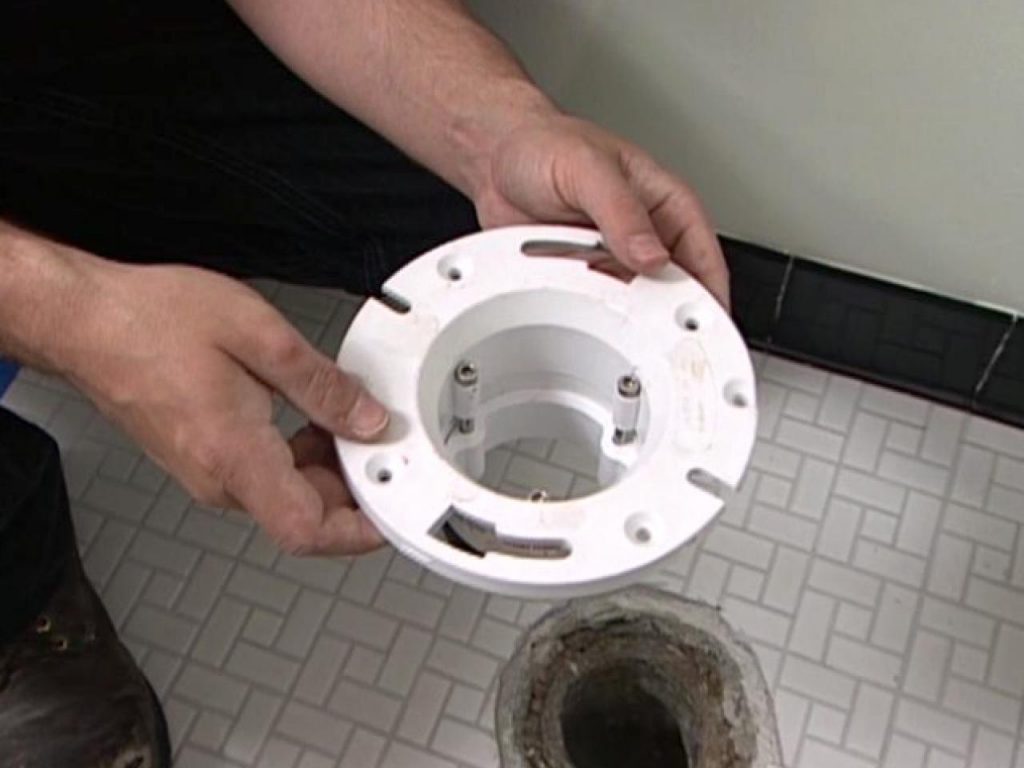|

The toilet flange is the interface between your sewer line and your toilet. It serves a double purpose:
- It is slotted to secure the bolts that hold your toilet down securely.
- It accepts the toilet wax ring to form a waterproof barrier and a means of keeping those sewer gasses out of your bathroom.
Like anything else, they will go bad at some point. Flanges, and the sewer lines they go into, are available in two different materials — modern plastic and old-style cast iron. How you repair a toilet flange depends on what what material you are working with. The first thing you will have to do, you guessed it, is pull the toilet to diagnose the problem. While you are at it, it doesn’t matter if it is an old commode or a newer low-flow toilet, this is a good time to replace other parts like the tank-to-bowl gasket and the filling mechanism.
Repairing Plastic Toilet Flanges
- Eared Reinforcement Ring. If you have a plywood subfloor that has some rot around the flange and one or more of the securing flange-to-subfloor screws won’t hold because of it, this may be your solution. The “ears” simply extend further. This is also a viable solution for concrete slabs if part has chipped away.
- Two-Part Repair Ring. Some flanges are composed of plastic with the outer ring (with the bolt slots and screw holes) made of steel. Eventually, this steel will rust. A repair ring is a good solution. Two versions are available — hinged or two-part. Your choice.
- Stainless Steel Repair Ring. Solid plastic flanges (as opposed to the steel ring above) work well until they happen to break or bend. The easy fix is to screw a repair ring over your plastic flange.
Repairing Cast Iron Toilet Flanges
- Repair Brackets. Older cast iron flanges often break. This can occur on one or both sides. If the broken area contains a bolt slot, slipping a repair bracket under the cast iron lip will do the trick.
- Repair Flange. If the flange is too badly damaged to use repair brackets, a repair flange is your best bet. This is a plastic flange that is inserted into the mouth of the old cast iron flange. You may need to clean up and break away remaining parts of the old flange with a hammer and cold chisel.
These tips on how to repair a toilet flange will cover most situations. In addition to the repair materials here, you may find additional ones on the market. New ones are being invented all the time, which is a good thing for us. In fact, plumbing innovations are popping up all the time, driven by style, materials, and the effort to conserve water.
Toilet trivia: When you heard some one say, “I’ve got to go spend a penny,” when going to the bathroom, did you ever wonder where that came from? Well, when public toilets became popular in the Victorian days, they cost a penny to use.

Looking for more great content? Visit our partner sites:
I offer article and blog-writing services. Interested? Hire Me!
Did you find this article helpful? Thanks for supporting this free site with a small donation!
Visit Kelly’s profile on Pinterest.
About the Author:
 Kelly R. Smith is an Air Force veteran and was a commercial carpenter for 20 years before returning to night school at the University of Houston where he earned a Bachelor’s Degree in Computer Science. After working at NASA for a few years, he went on to develop software for the transportation, financial, and energy-trading industries. He has been writing, in one capacity or another, since he could hold a pencil. As a freelance writer now, he specializes in producing articles and blog content for a variety of clients. His personal blog is at I Can Fix Up My Home Blog where he muses on many different topics.
Kelly R. Smith is an Air Force veteran and was a commercial carpenter for 20 years before returning to night school at the University of Houston where he earned a Bachelor’s Degree in Computer Science. After working at NASA for a few years, he went on to develop software for the transportation, financial, and energy-trading industries. He has been writing, in one capacity or another, since he could hold a pencil. As a freelance writer now, he specializes in producing articles and blog content for a variety of clients. His personal blog is at I Can Fix Up My Home Blog where he muses on many different topics.




When I had to remove my PVC flange that was glued into the sewer line I had to use a saw and a chisel. Fairly fast job when you get the hang of it. Just don’t lose any chunks of plastic into the pipe.
Yeah, the city guys that have to deal with the sewer down the line won’t be happy.
They get paid enough for it, ha.